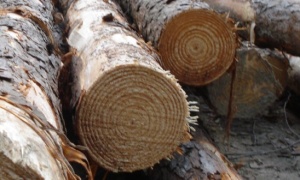COLLIDING PLOT LINES AND CHARACTERS
When character plot lines collide ACTION happens. Today I hope to share a concept about plot and character development that is not in most writing textbooks. It is something I’ve discovered while reading Best Seller Novels and working with very creative writers who have brought me online with them to get their book projects finished. Most teachers of creative writing divide the elements of developing PLOT and creating CHARACTERS into two separate study/working categories. What I offer you today is the idea that these novel pieces need to be joined at the hip to the point of quite literally colliding while your novels are written.
What comes closest to my suggestion is discussed by language arts professors as “creating the character’s backstory.” The log illustration I’ve selected is my visual representation of their backstory concept and my altered perspective of Colliding Character Plotlines.
Have you ever been to a logging camp and observed the lumberjacks in the tree-cutting process or witnessed a logger stacking recently cut trees in preparation for transport?
- The lumberjack’s term “widowmaker” expresses the danger of being near a tree that has not yet fallen to the ground yet is about to do so at any moment. This creates “situational awareness” that often means life or death for the L-jacks in the area—and is compared to the situational and observable actions and events that are set in place to move a story from beginning to end.
- Once the trees are on the ground, they are trimmed. Painful though it may be, this is also a necessity when selecting which events (and which characters) stay—or go—in your novel.
- Then the tree trunks are dropped one-upon-the other—often from a significant height—and the landing upon the logs below is anything but soft. Characters colliding to form a specific unit of storytellers for your book will experience similar interactions.
- The bark (their skin) is often ripped off in this process as if creating yet another open wound. IF a tree remains connected to its roots there is the possibility of healing—also a potential with character development.
- The visible tree-rings expose the backstory of each log (character histories) and they are now jammed together on flat-bed trucks, railroad cars, or horse-drawn wagons. Many are rolled down mountainsides into cold rivers for “timber-rafting” travel.
WHERE will these tree-trunk-logs end up? The saw mill or paper mill or possibly a firewood pile. I know there will be conservationists out there reading this blog, and I encourage you to keep writing about the abuses of some logging companies. However, when I joined a friend in doing research about the paper mill industry, we wrote a paper about how several big companies have joined conservationists in re-foresting lands and educating the public about being “responsible environmental citizens.” This in turn encourages me that (for the foreseeable future) I will continue to enjoy holding books made of paper in my hands.
Where will your trimmed and stacked and transported and colliding CHARACTERS end up? Only you can answer that question. However, I suggest that you might also ask them. They—and their tree-ring-backstory—will be of great assistance in building your plot/story line. And when you reach that last page of the manuscript, PUBLISH! If you don’t, those characters will collide with other stories you’re writing for quite a long time.
 ABOUT ROYALENE DOYLE: Royalene Doyle is a Ghostwriter with Outskirts Press, bringing more than 35 years of writing experience to authors who need “just a little assistance” with completing their writing projects. She has worked with both experienced and fledgling writers helping complete projects in multiple genres. When a writer brings the passion they have for their work and combines it with Royalene’s passion to see the finished project in print, books are published and the writer’s legacy is passed forward. ABOUT ROYALENE DOYLE: Royalene Doyle is a Ghostwriter with Outskirts Press, bringing more than 35 years of writing experience to authors who need “just a little assistance” with completing their writing projects. She has worked with both experienced and fledgling writers helping complete projects in multiple genres. When a writer brings the passion they have for their work and combines it with Royalene’s passion to see the finished project in print, books are published and the writer’s legacy is passed forward. |
